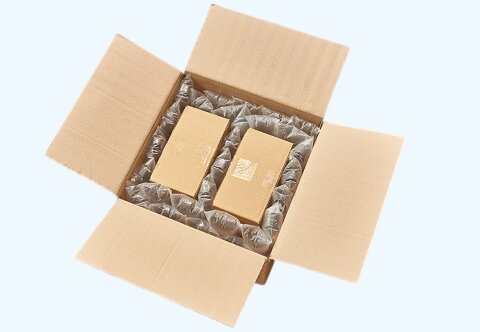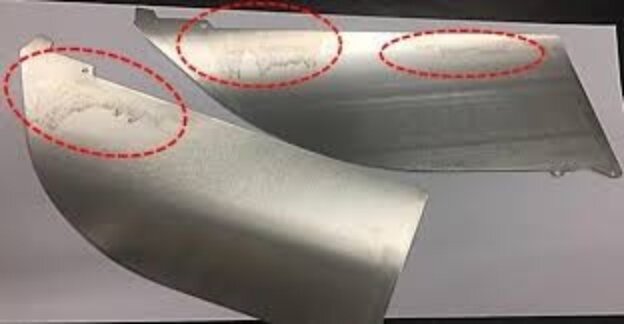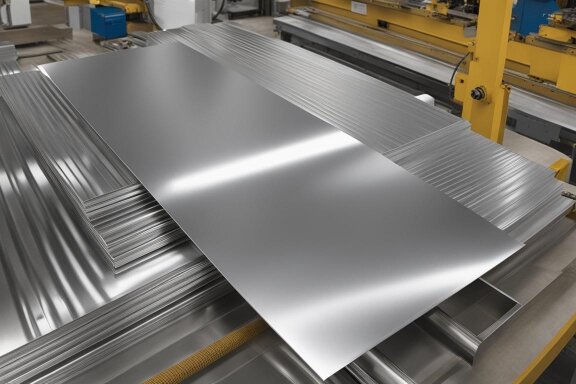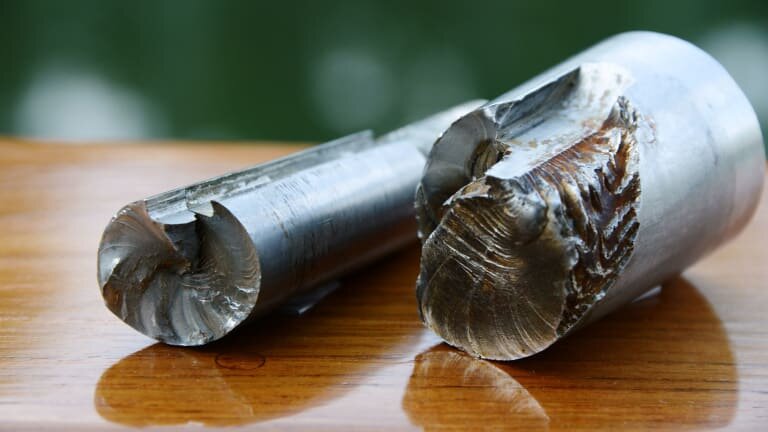Ever encountered a project requiring cast aluminum welding? Welding cast aluminum can be challenging. This metal’s high thermal conductivity and tendency to crack require a specific approach and the right techniques. Without proper preparation, welding can lead to weak joints and potential failures.
To weld cast aluminum effectively, clean the surface thoroughly, preheat the material, and use the correct filler rod. TIG welding is often the best method for providing precise control. Use an AC setting to manage the oxide layer on the aluminum and ensure strong welds.
This post will break down the key steps to successfully welding cast aluminum. Let’s delve deeper into the preparation and welding process!
Understanding Cast Aluminum
Before we dive into the welding process, let’s get familiar with cast aluminum itself:
What is cast aluminum?
Cast aluminum is formed by pouring molten aluminum into a mold. This allows for intricate and complex designs.
Common Applications and Uses
Cast aluminum is used widely in many industries because of its lightweight, excellent strength-to-weight ratio, and heat conductivity. Here are some of the most common uses:
- Automobile parts: Engine block, wheels, transmission houses
- Aerospace Components: Aircraft Parts, Spacecraft Structures
- Electronics: Housings and accessories for mobile phones, laptops, and other devices
- Consumer Goods: Cookware and furniture components
- Characteristics and Properties
Cast aluminum has many benefits but has specific properties that you should consider when welding.
- High Heat Conductivity: This leads to rapid heat dissipation and makes maintaining a concentrated weld pool challenging.
- Brittleness: Cast aluminum is more susceptible to cracking than other metals and requires careful temperature control when welding.
- Porosity: Air pockets can form during casting and require special cleaning techniques before welding.
Welding Types for Cast Aluminium
Let’s now explore the various welding methods available to you:
TIG (Tungsten Inert Gas) Welding:
Pros: Has excellent control and precision. Ideal for creating solid and clean welds in thin-cast aluminum sections.
Con: Operation requires a high degree of expertise and experience.
MIG (Metal Inert Gas) Welding:
Pros: Faster weld speed than TIG. Suitable for thicker cast aluminum pieces.
Con: It is more difficult to obtain a clean weld pool due to the addition of filler metal.
Oxy-Acetylene Welding:
Pros: Widely accessible and relatively affordable equipment
Cons: Less precise heat control is needed compared to MIG or TIG.
Comparison between Welding methods:
The cast aluminum’s thickness, the joint’s desired strength, and the level of your experience will all influence the best welding method.
Here’s a quick comparison:
| Feature | TIG Welding | MIG Welding | Oxy-Acetylene Welding |
|---|---|---|---|
| Control | Excellent | Good | Fair |
| Speed | Slow | Moderate | Moderate |
| Heat Input | Low | Moderate | High |
| Skill Level Required | High | Moderate | Low |
| Suitability for Thin Material | Yes | Limited | Not Recommended |
Choosing the Right Filler Material
Choosing a suitable filler material for a successful aluminum cast weld is essential. What you need to understand:
Types of Filler Rods and Wires
There are two types of filler metals used for cast aluminum:
- Filler Rods: Primarily used for TIG welding. These rods are available in a variety of alloys and diameters.
- Filler Wires: Used in MIG welding. These continuously fed spooled stranded wires perform a similar role to filler rods.
What to consider when selecting filler material
Several factors influence your choice of filler material:
- Base Metal Composition: The filler metal’s alloy should match the base metal to achieve optimal compatibility and welding strength.
- Requirements for weld strength: Select a filler with the strength required to meet your application’s requirements.
- Weldability: Certain filler materials have better welding characteristics. This makes the process of welding easier.
Filler materials commonly used in cast aluminum
These are the most common filler materials used in cast aluminum welding.
- 4043: A general-purpose filler rod that is weldable and corrosion-resistant.
- 5356: Higher strength than 4043. Suitable for demanding applications.
- 4943: A silicon and magnesium alloy known for its high machinability and good crack resistance.
Cleaning and Preparing the Aluminum
Cleaning and preparation are essential to achieving successful welding on cast aluminum. Here’s why:
Cleaning Cast Aluminium:
Contaminants such as oil, grease, and dirt can affect the weld’s quality by interfering with the proper fusion of base metal to filler.
Techniques to Remove Contaminants :
- Degreasing: Clean the area where you are welding with a solvent or degreaser to remove all oil and grease.
- Wire brushing: Use stainless steel wire brushes to remove any dirt or oxidation that remains on the surface.
- Cleaning with chemicals: In some cases, chemical etching may be necessary to remove stubborn oxides and contaminants.
When and why to preheat the aluminum:
In certain situations, it can be advantageous to preheat the cast aluminum before welding.
- Improves quality of weld: Preheating allows for more uniform heat distribution, reducing the cracking risk.
- Shortens the welding process: Preheating the workpiece reduces the heat input required to reach welding temperatures, resulting in faster welding.
Tip: Preheating temperatures depend on the thickness and type of welding used. It’s best to consult either a welding manual or a professional for specific recommendations.
Welding Techniques & Best Practices
After you have chosen the best welding process and filler material and prepared the aluminum, it is time to learn the actual welding techniques!
How to Set Up Your Welding Machine
Depending on the type of welding (MIG or TIG) and the machine model, you will have different setup procedures. Nevertheless, some general principles apply.
- Refer to your machine’s manual: For detailed instructions regarding setup and operation, always refer to the user manual of your welding machine.
- Select an appropriate welding current: Select amperage and voltage settings according to the thickness of your cast aluminum and recommendations for the filler material you have chosen.
- Set gas flow rate: When TIG welding is used, a sufficient flow of inert gases (usually argon) will shield the pool from contamination.
- Prepare your tungsten electrode (TIG) or welding wire (MIG): Choose the appropriate size and type of electrode or wire for your application.
Understanding Welding Parameters (Amperage, Voltage, etc.)
Here is a list of the most essential welding parameters that you will encounter:
- Amperage: Controls heat input and weld penetration depth. A higher amperage will result in a hotter and deeper weld.
- Voltage: Has an impact on the arc characteristics and bead size.
- Travel Speed: The rate at which the torch is moved along the joint. It has a significant impact on the size and penetration of the weld.
How to Weld Strongly
When welding cast aluminum, you should never forget the following techniques:
- Maintain the proper torch angle: The angle should be slightly tilted back (push-angle) to ensure good penetration.
- Use backing plates: Backing plates can prevent welds from cracking by supporting molten metal at the backside.
- Stringer beads: When welding, aim for narrow and consistent stringer beads. Avoid excessive torch weaving, which can cause the base metal to overheat.
- Clean up the weld pools regularly. When TIG welding, clean the pool frequently with a tungsten electrode.
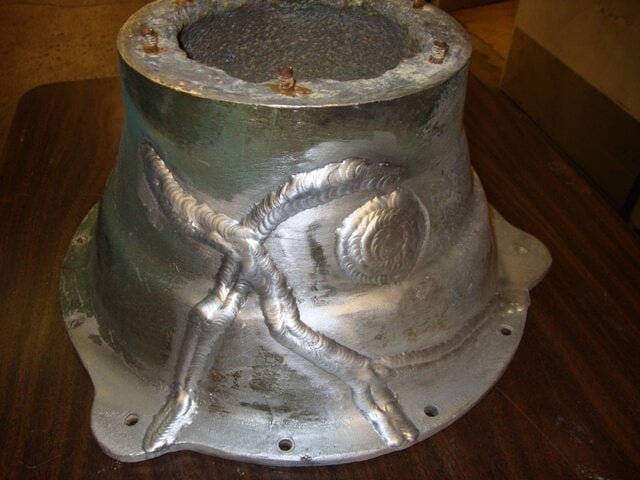
Tackling Common Welding Challenges
You may still encounter challenges even with the best preparation and technique. Here are some common problems and how to fix them:
Addressing the Porosity Problem
“porosity” refers to the air pockets trapped in the metal. How to reduce it:
- Thorough Cleaning: Make sure the surface of the welder is thoroughly cleaned and that it’s free from contaminants such as moisture or oil.
- Use of shielding gas: Maintain the proper flow rate for inert gases to protect weld pools from contamination.
- Heat control: Avoid overheating, which can lead to air pockets forming. Use the correct amperage setting and travel speed.
Manage Cracking and Warping
Due to the high temperatures in welding cast aluminum, cracking and warping can be a problem. Here’s what you can do to fix them:
- Preheating: Preheating the workpiece can reduce thermal shock and cracking during welding.
- Stringer beads: Create tiny stringer beads to reduce heat concentration.
- Stress Relief Techniques: In some instances, post-welding stress relief techniques such as annealing may be helpful to reduce residual stresses.
- Clamping: Use clamps strategically to minimize warping of the weld during the process.
Oxidation: How to Deal with it
The formation of an oxide film on the aluminum surface is called oxidation. Here’s what to do:
- Cleaning: Clean the area thoroughly with a wire brush or chemical etching before welding to remove any oxide layer.
- AC Balance (TIG): Use the AC balance function when TIG welding to remove oxides and break down the weld pool.
After-welding Procedures
There are a few essential steps you should take after your weld to ensure that it is successful.
Cooling down the Weld
- Allow for natural cooling: It is generally best to allow the weld to cool naturally at room temperature. Avoid quenching welds with compressed air or water, as they can crack.
Cleaning the Welded Area
- Remove spatter and slag: Use a chipping hammer or wire brush to remove any spatter or slag from the weld area.
- Cleanse the weld area: Use a soapy water solution or solvent to remove contaminants.
Inspection of the Weld for defects
- Visual Inspection: Scrutinize the weld for visible defects such as cracks, holes, and undercuts.
- Dye Penetrant Testing (Optional): In critical applications, you may want to consider a dye penetrant to detect surface imperfections or cracks that are not visible to the naked eye.
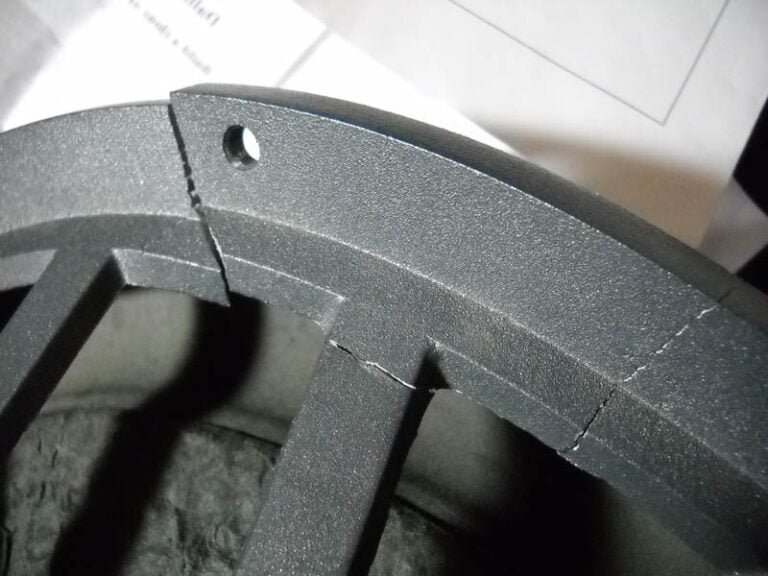
Repairing Defective Welds
Even the most experienced welders can encounter defective welds. How to detect and fix these problems:
Identification of Weld Defects
Several common defects can occur with cast aluminum welds. Here are a few ways to identify these defects:
- Visual Inspection: Look out for cracks, undercuts, or porosity.
- Dye penetrant Testing: The non-destructive testing method helps reveal surface cracks that may be invisible to the naked eye.
How to Repair Cracks and Holes
Do not worry if you find cracks or holes in your weld. Repairs can be done in a few ways:
- Grinding the defect out: Use a die grinder, rotary tool, or other specialized machine to grind any cracks or holes. Remove all the defects and make a V-shaped groove to refill.
- Cleaning the area again: Clean the repaired area thoroughly to remove contaminants before rewelding.
- Rewelding Procedures: Use the same welding technique you used to weld the groove. Be sure to pay attention to heat control and bead placement to prevent new cracks from being created.
Remember: When repairing a welded, the base metal around it can become more susceptible to cracking. It may be necessary in some cases to heat the area surrounding the repair zone.
Re-welding Procedures
Re-welding an area that has been repaired is similar to initial welding. Here’s a quick recap:
- Install your welding machine according to your chosen process (MIG or TIG).
- For optimal weld penetration, maintain the proper torch angle and speed.
- Avoid excessive heat by focusing on stringer beads.
- To remove oxides, clean the pool of weld with a tungsten electrode.
Advanced Welding Techniques
Here are some advanced cast aluminum welding techniques for experienced welders who want better results.
Pulse welding for cast aluminum
The pulse welding technique is a variation on the TIG process. Cast aluminum offers many advantages.
- Reduced Heat Input: The pulse welding technique delivers heat in short bursts to allow for better control of the weld pool temperatures and minimize the risk of cracking.
- Better weld penetration: The pulsing motion can help achieve deeper weld penetration than standard TIG weld.
- Less distortion: By minimizing heat input, pulse welding reduces the overall heat distortion on the workpiece.
Note: The pulse welding function requires a TIG with a pulse mode and may require slightly different parameters than standard TIG welding.
Use Backing Plates
The backing plates are an essential tool when welding cast aluminum sections fragile ones. Here’s why:
- Prevents burn-through of weld: The backing plate supports the molten steel on the backside, preventing the metal from sagging and burning through the thin aluminum.
- Improves the quality of welds: The backing plate can create a smoother, more consistent bead at the backside.
- Supporting the weld pools, backing plates reduce the contraction stresses, which can lead to cracking.
Backing Plates are available in various materials, including ceramic, copper, and steel. Each material has its benefits and limitations. The material chosen depends on the application and welding method.
Thin Aluminum vs. Thick Aluminum
The thickness of your cast aluminum will influence your technique and process choice.
- Thin cast aluminum (less than 3 mm): TIG welding with pulse capability is often preferred because of its excellent control of heat input. Material burnout can be avoided using tiny diameter filler rods and minimum amperage settings.
- Cast aluminum thicker than 6mm: MIG is the faster, more efficient alternative. A bevel used to prepare the joint will ensure a sufficient weld thickness.
Welding Cast Aluminium in Different Positions
The position of the weld has a significant impact on the casting aluminum welding process. Here is a list of common welding positions and how to use them.
Flat Position Welding
- Description: Flat Position Welding refers to situations where the weld is horizontally positioned on a flat surface.
- Benefits: The position is easy to control, and the best for welding cast aluminum. Gravity helps the pool of weld, and the joint is easily accessible for torch manipulation.
- Techniques: Use techniques that you have learned before, with a focus on maintaining the proper torch angle, traveling speed, and stringer beads.
Welding in a horizontal position
- Description: Horizontal Position Welding involves welding on a horizontal surface with the weld axis horizontal.
- Challenges: Gravity may cause the metal to drip down or flow downward.
- Techniques: Use a slightly steeper angle of push (pointing the torch upwards more) to counteract gravity’s downward force. To minimize the fluidity of weld pools, reduce amperage compared to flat-welding.
Welding in Vertical and Above Positions
- Description: Vertical Position Welding involves welding on a horizontal surface, with the weld axis vertical. Overhead position refers to the welding of a horizontal surface above you.
- Challenges: Molten metal runs downwards, making it hard to maintain a weld pool.
- Techniques: Use a small filler rod with the lowest amperage setting possible. Stringer beads and short weaving movements upwards may be required for the proper filling of welds.
Conclusion
Cast aluminum welding is a rewarding but challenging process. Understanding the proper techniques, materials, and safety measures will help you achieve functional and strong welds for your cast aluminum project.
Do you need a reliable sheet metal parts manufacturer? Shengen is the place to go. We specialize in sheet metal laser cutting, bending, surface finish, and CNC Machining. Reach out to Shengen Today and seek help from professionals!
FAQs
Can you weld cast aluminum with a stick welder?
Due to several limitations, stick welding (arc welding) should be used for something other than cast aluminum. Stick welding or arc welding, is a process with a high heat input that can crack cast aluminum.
What is the best way to prevent cracking in Welds?
It’s impossible to eliminate cracking with a single technique, but a combination can reduce the risk. To prevent cracking, clean the aluminum surface thoroughly to remove contaminants. The aluminum can be preheated to reduce thermal stress. The parameters should be set based on thickness and project requirements.
How do you choose the correct welding method?
The proper welding method for cast aluminum is dependent on several factors. The aluminum’s thickness and the project’s requirements are among the factors determining the best welding method.
More Resources:
Pulse welding – Source: Lincoln Electric
Welding aluminum in different positions – Source: Fronius
Backing plates for welding – Source: Cwbgroup
Hey, I'm Kevin Lee

For the past 10 years, I’ve been immersed in various forms of sheet metal fabrication, sharing cool insights here from my experiences across diverse workshops.
Get in touch

Kevin Lee
I have over ten years of professional experience in sheet metal fabrication, specializing in laser cutting, bending, welding, and surface treatment techniques. As the Technical Director at Shengen, I am committed to solving complex manufacturing challenges and driving innovation and quality in each project.

